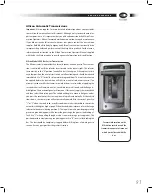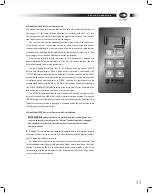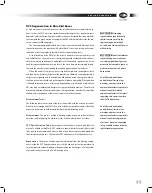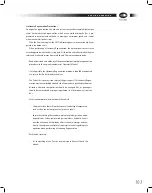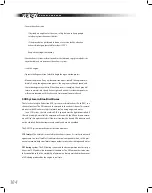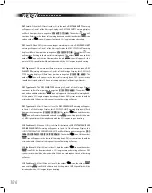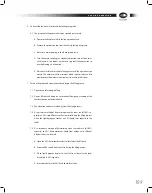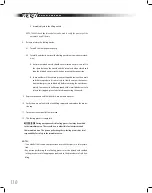
VISION
D R I V E R S H A N D B O O K
98
The exhaust systems of 2010 emission compliant engines
incorporate engine-specific Diesel Particulate Filters, which
operate at higher temperatures during their Regeneration
cycles. The front exhaust pipes are insulated, and heat shields
are installed at locations along the exhaust tubing.
[CAUTION]
In 2007 diesel en-
gines, use only diesel fuel labeled
Ultra Low Sulfer, per the engine
manufacturer’s specifications.
In Cummins, use oils meeting API
CJ-4/SL and Cummins Engine
Standard CES-20081. See Cum-
mins Owners Manual ISB 6.7L
CM2150 for details.
Exhaust System
New federally mandated emission standards affect all buses equipped with 2010
emission compliant diesel engines. Both nitrogen oxide (NOx) and particulat mat-
ter are reduced by 90 percent from 2004 levels. The exhaust system of the Cummins
engine in Blue Bird buses are
aftertreatment
systems which incorporate a
Diesel Par-
ticulate Filters
(DPF) and a Selective Catalytic Reduction (SCR) system instead of or-
dinary mufflers. These sophisticated exhaust systems reduce emissions by trapping
exhaust-borne particulates (soot) in a filter built into the DPF. The SCR system then
reduces NOx levels through a chemical reaction changing the NOx into harmless ni-
trogen and water.
Soot accumulates in the DPF over time and must be removed by a process re-
ferred to as
regeneration.
Regeneration is conceptually similar to the cleaning mode
of a self-cleaning oven in that heat is required to remove the soot.
The rate at which soot accumulates is dependent upon multiple conditions in-
cluding the quality of the diesel fuel, type of engine oil, and ambient temperature,
engine load, and other factors. Regeneration occurs in three ways:
• Some regeneration occurs “naturally” whenever operating conditions (speed,
engine load, etc.) result in exhaust system temperatures high enough to oxi-
dize accumulated soot. This unassisted regeneration process can generically
be referred to as “passive” regeneration.
• Regeneration can be caused by raising the temperature of the exhaust sys
-
tem. Cummins engines are equipped with systems designed to increase ex-
haust temperature when the ECM senses that regeneration is needed, and
when certain requirements, including a minimum travel speed, are met. This
automatic “heat assisted” mode can be generically referred to as “active” re-
generation.
• Regeneration can be manually activated by means of a switch. This proce
-
dure is generically referred to as “stationary” regeneration, and should only
be performed by or under the direction of a qualified service technician, and
in a controlled environment to avoid the potential for human injury or fire
hazards.
The need for regeneration is communicated to the driver by a set of visual and au-
dible signals in the instrument panel. An additional alert, the High Exhaust System
Temperature (HEST) indicator, notifies the driver whenever exhaust system tempera-
ture is high due to recent regeneration.
Eventually, the normal ash accumulation which results from the regeneration
process must be removed from the DPF, using equipment designed for the purpose
at qualified engine service facilities. Refer to the engine manufacturer’s documenta-
tion for these service intervals. The engine operator’s manual provided with your bus
contains additional information about exhaust system regeneration, and should be
read and understood by the driver.
Содержание VISION 2011
Страница 1: ...10013333 2011 BBCV D R I V E R S H A N D B O O K 10013333 BBCV BLUE BIRD VISION 2011 ...
Страница 2: ......
Страница 3: ...10013333 Revision B ...
Страница 8: ...VISION D R I V E R S H A N D B O O K 6 ...
Страница 26: ...VISION D R I V E R S H A N D B O O K 24 ...
Страница 70: ...VISION D R I V E R S H A N D B O O K 68 ...
Страница 137: ...135 Notes n o t e s ...
Страница 138: ...VISION D R I V E R S H A N D B O O K 136 Notes ...
Страница 139: ......
Страница 140: ...10013333 2011 BBCV D R I V E R S H A N D B O O K 10013333 BBCV BLUE BIRD VISION 2011 ...








